Technology XtendLead Management
We provide quality service & support at the most reasonable rates.
Lead Management is a systematic approach used by businesses to capture, track, qualify, distribute, and nurture leads (potential customers) with the goal of converting them into paying customers. It ensures that every inquiry or potential interest is followed up efficiently, improving the overall sales process.
Benefits of Lead Management
- ✦ Boosts sales efficiency by focusing on qualified leads.
- ✦ Helps in tracking interactions and improving customer experience.
- ✦ Reduces response time, increasing the chances of conversion.
- ✦ Provides data-driven insights for better marketing decisions.
- ✦ Encourages collaboration between marketing and sales teams.
Features of Our Lead Management Softwarwe
✅ Branch Management – Manage leads separately for multiple branches or locations.✅ Staff Management – Add, edit, or remove staff and assign specific roles or permissions.
✅ Lead Categories – Categorize leads based on source, interest level, or service type.
✅ Lead Management – Add, track, and manage leads with full details and follow-up records.
✅ Status Update – Update lead status (e.g., New, Follow-up, Converted, Rejected).
✅ Hot Lead Status – Mark high-potential leads as "Hot" for priority follow-up.
✅ Staff-wise Lead Management – Assign leads to specific staff members and monitor performance.
✅ Website Integration – Automatically capture leads from your website into the system.
✅ Social Media Integration – Generate lead links for Facebook, Instagram, and other platforms.
✅ Lead Source Tracking – Identify the platform/source from where each lead was generated.
1. Dashboard
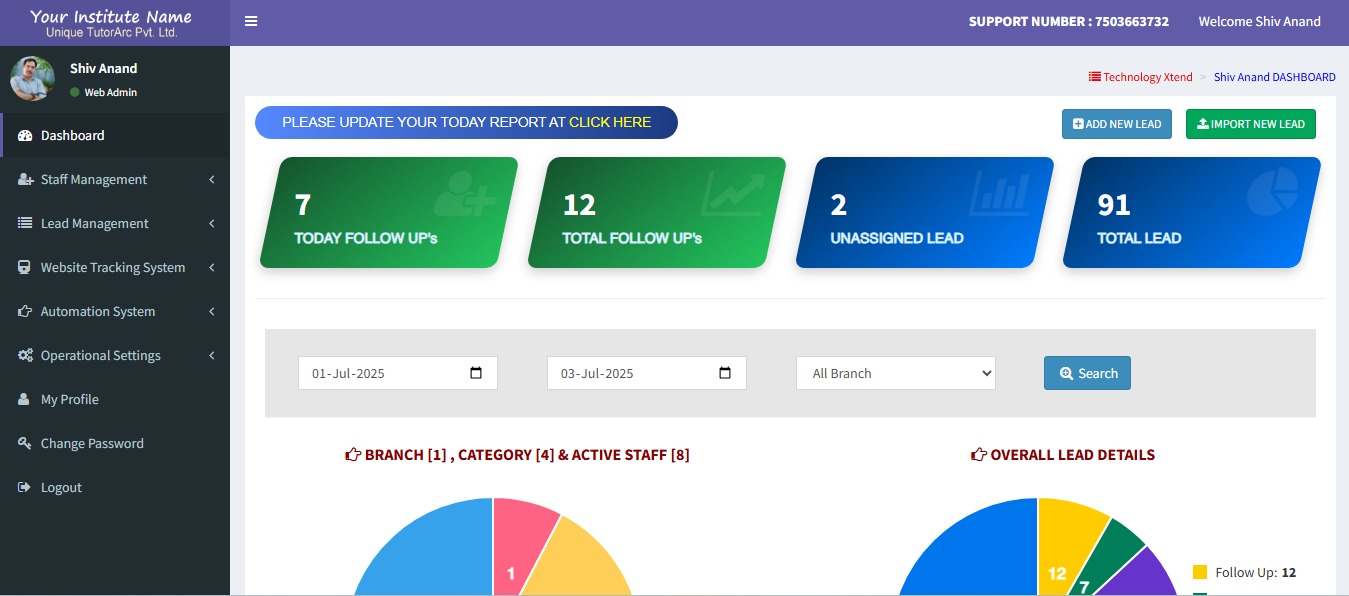
2. Branch Management
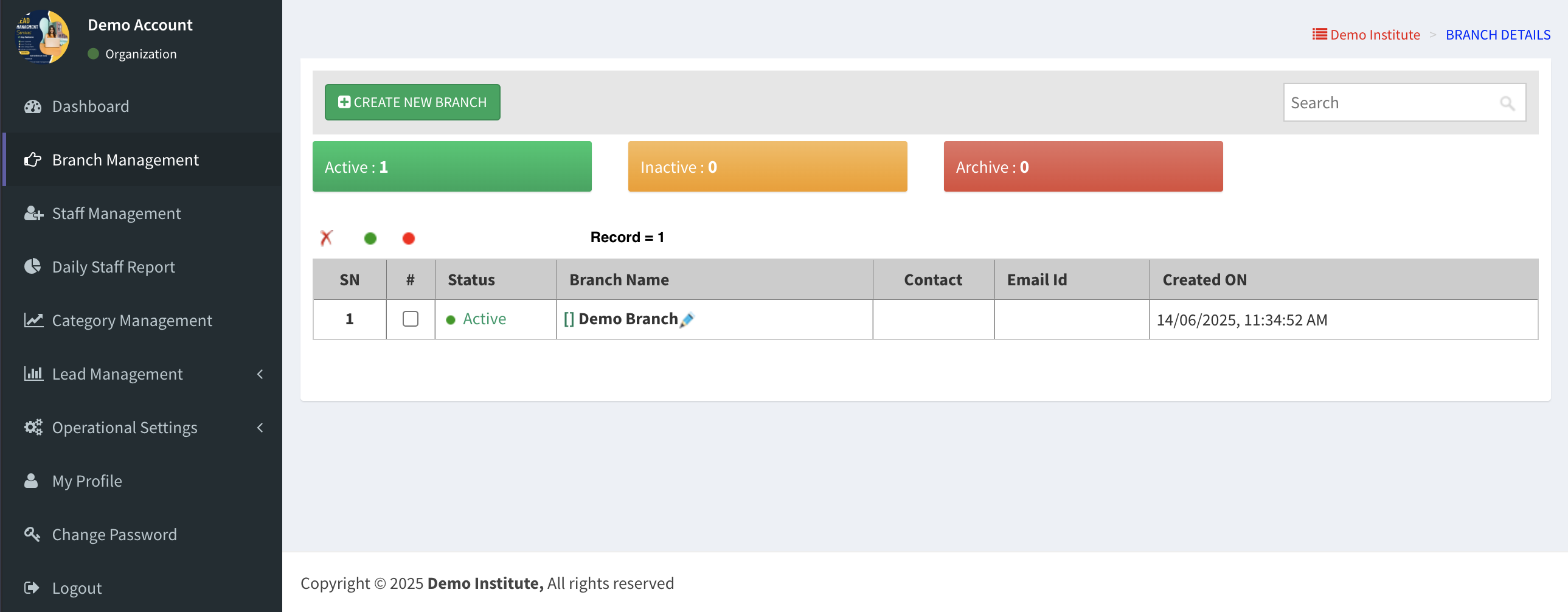
3. Staff Management
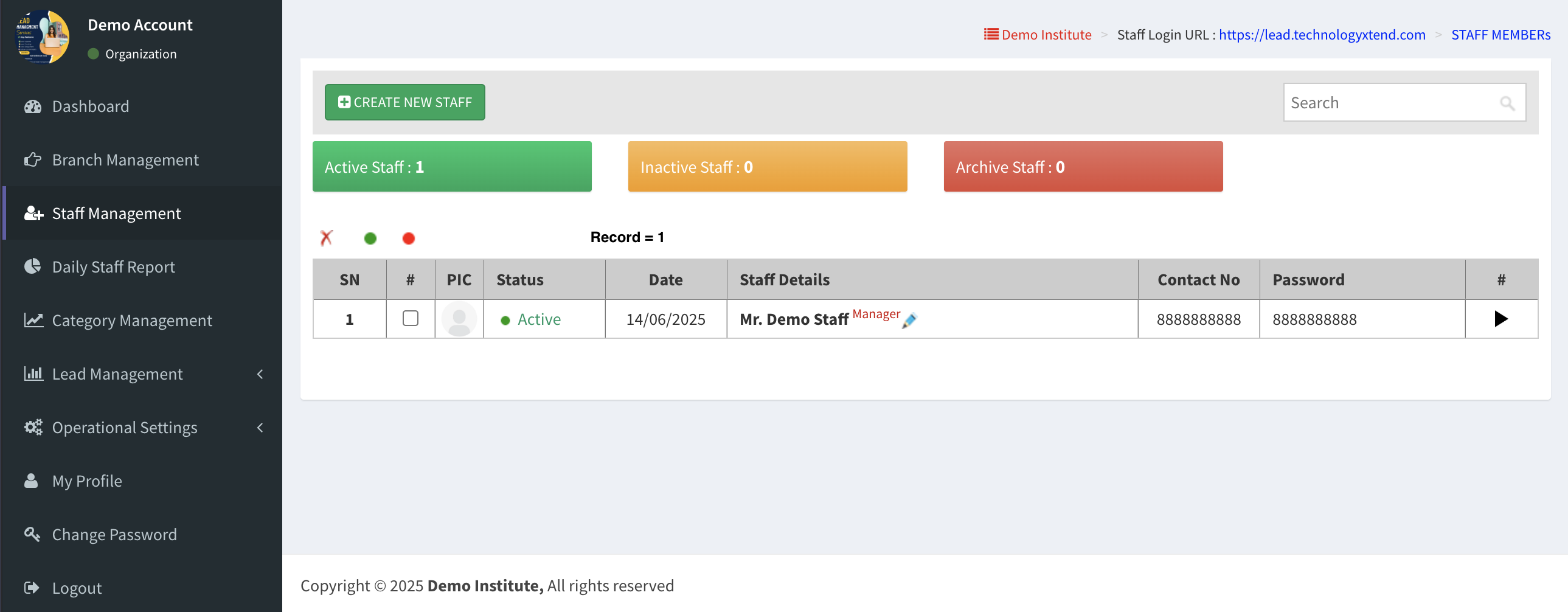
4. Daily Staff Report
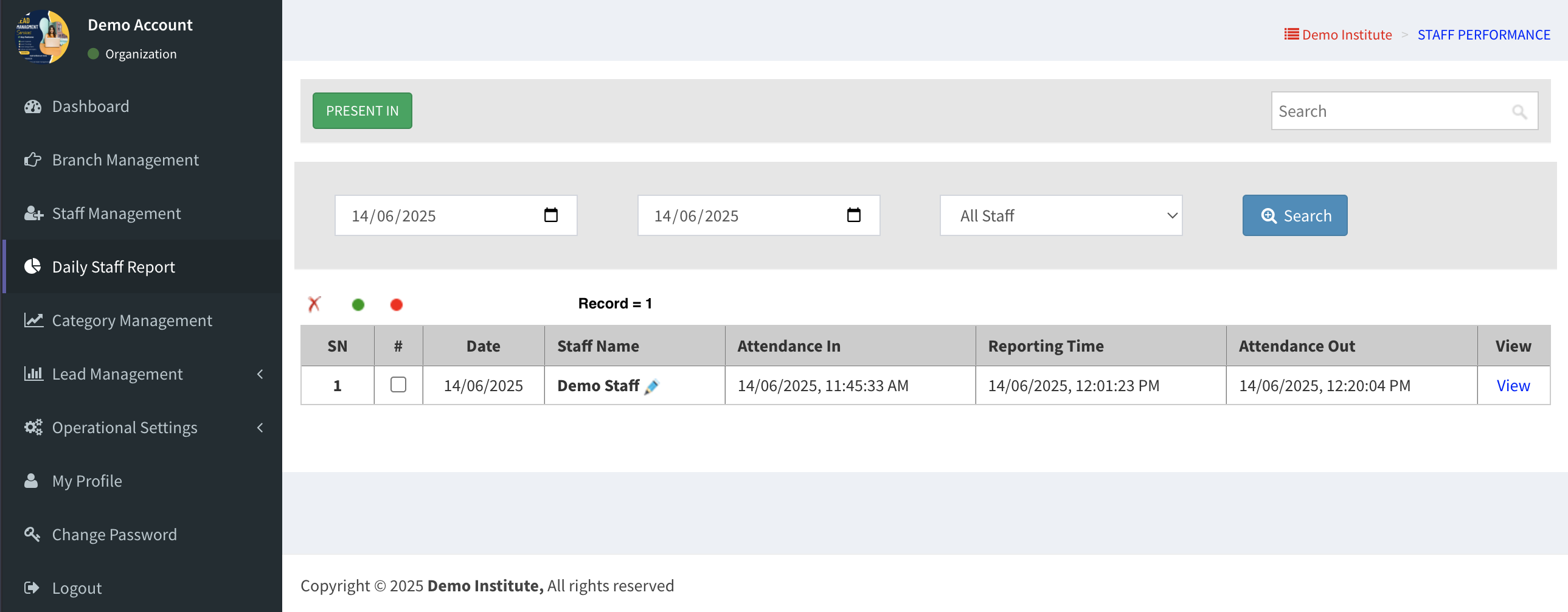
5. Category Management
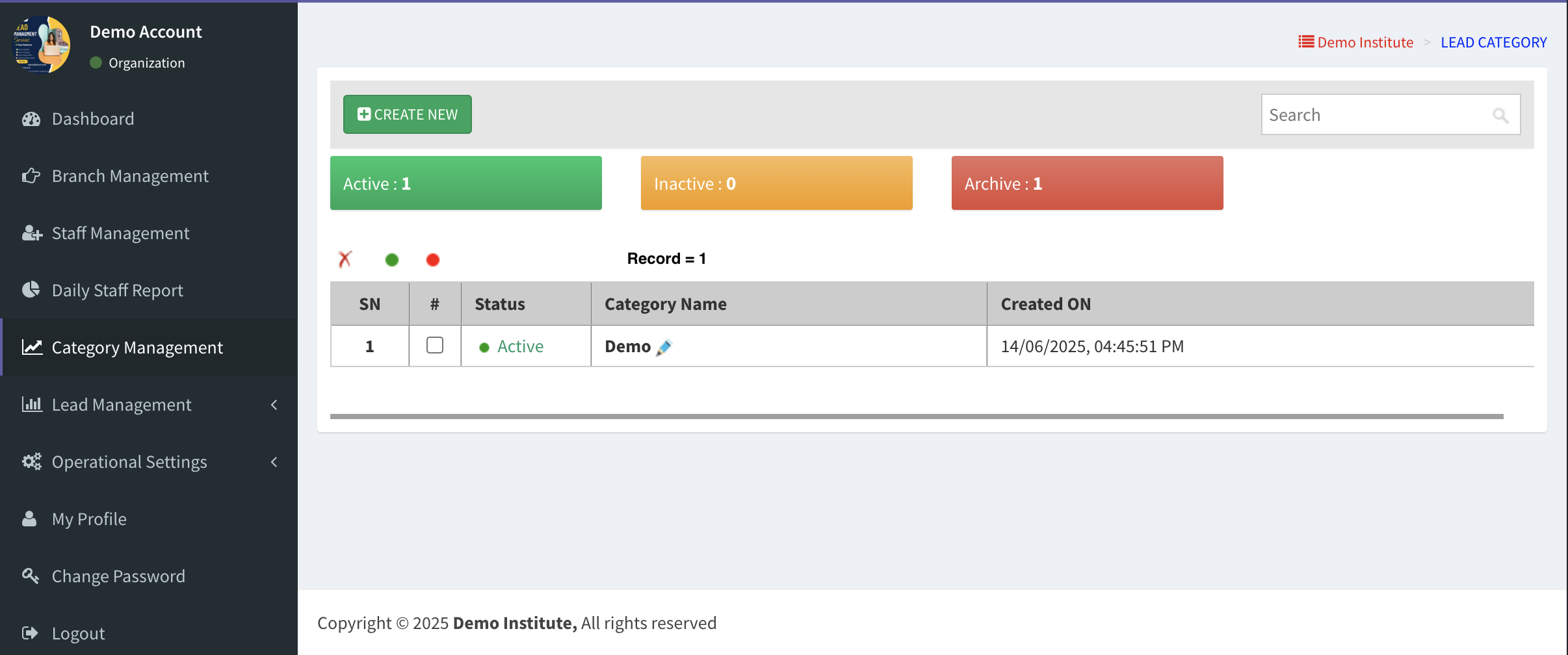
6. Lead Management
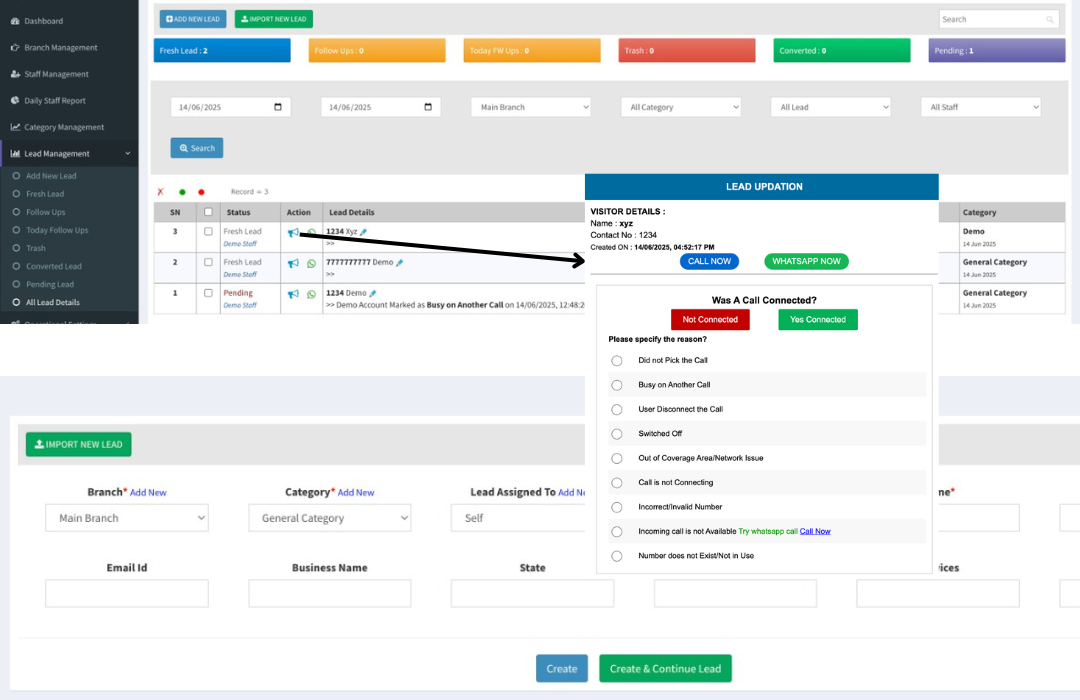
➤ For Demo Account:
Login URL : https://lead.technologyxtend.com
Username : 9999999999
Password : 9999999999
➤ For Demo Account:
Login URL : https://lead.technologyxtend.com
Username : 9999999999
Password : 9999999999
Centralized Lead Management via WhatsApp Group
Boost Your Sales Response We’re excited to introduce a newly launched application that can significantly streamline your lead management process. With this system, All your leads — whether from your Website, Google Ads, Meta (Facebook/Instagram) Ads, Just Dial, Sulekha, or Similar Platforms — will be delivered directly to your Sales Team’s WhatsApp Group in real time. ✅ Benefits: 👉🏻 Instantly respond to new leads without delay within seconds 👉🏻 Track exactly how many leads came from each source daily 👉🏻 Improve conversion rates through faster follow-ups 👉🏻 No need to manually check each platform — Stay Informed Effortlessly
Boost Your Sales Response We’re excited to introduce a newly launched application that can significantly streamline your lead management process. With this system, All your leads — whether from your Website, Google Ads, Meta (Facebook/Instagram) Ads, Just Dial, Sulekha, or Similar Platforms — will be delivered directly to your Sales Team’s WhatsApp Group in real time. ✅ Benefits: 👉🏻 Instantly respond to new leads without delay within seconds 👉🏻 Track exactly how many leads came from each source daily 👉🏻 Improve conversion rates through faster follow-ups 👉🏻 No need to manually check each platform — Stay Informed Effortlessly


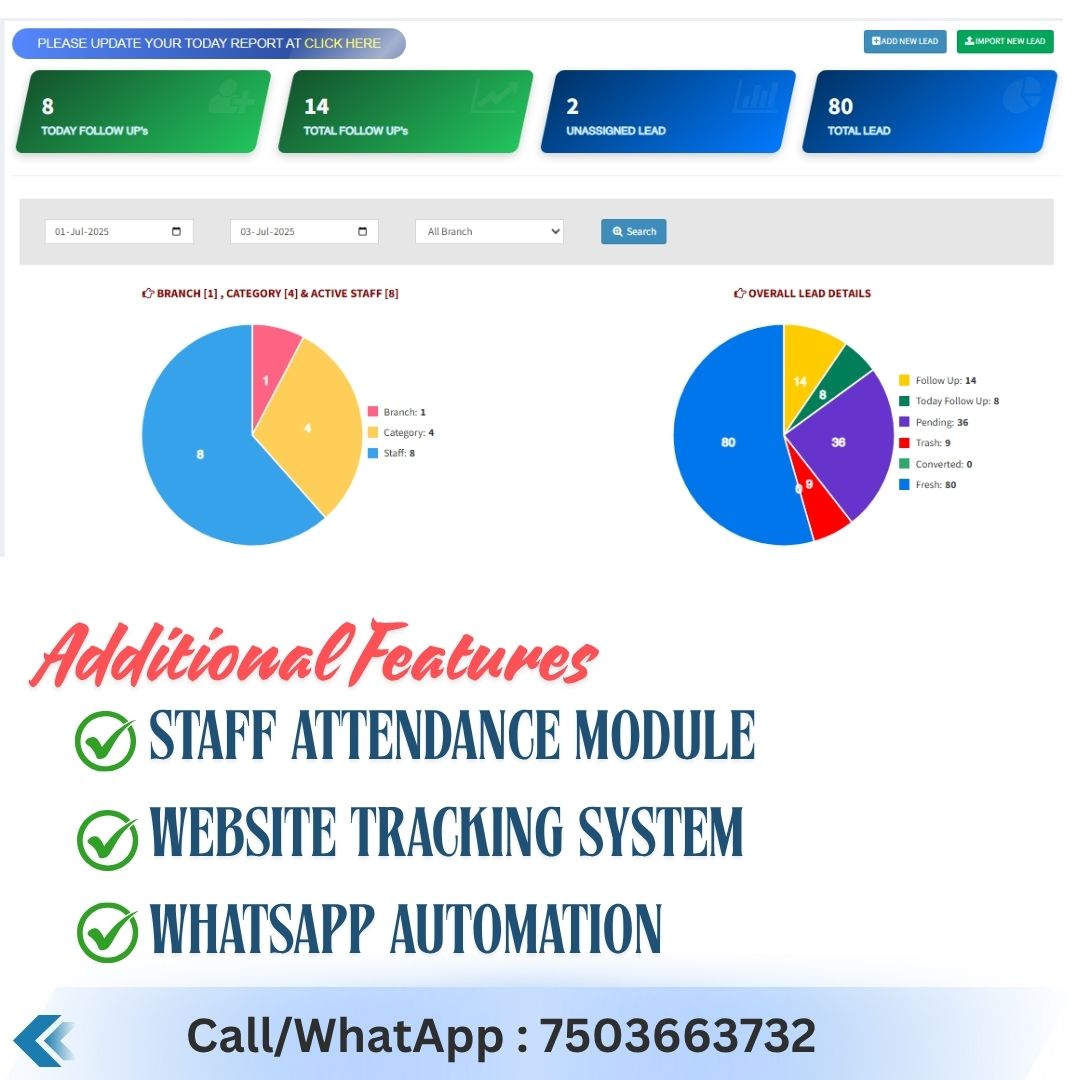
Connect with Us via Query Form
×

